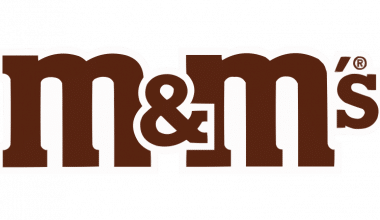Ford, one of the nation’s first automakers, is renowned for creating amazing vehicles, with the Ford Mustang serving as its pinnacle. One of Ford’s longest-running subbrands, the Mustang has been manufactured continuously since 1964. Car enthusiasts are fascinated by the high-tech sport coupe styling of the Mustang. The Mustang has remained a favorite among auto aficionados since it was first introduced, and various modern sports vehicles have been based on it. The Ford Mustang made its debut on April 17, 1964. Type A was the most popular vehicle in, selling over 40,000 units. In this article, we will be looking at the Ford Mustang logo, evolution, symbol, and car production history.
Mustang History
Wild horses wander freely in the Western United States of America, including mustangs, which are feral horses, meaning they were originally domesticated but have since gone wild. These horses are decedents of the Spanish horses that were introduced to the United States. Today, mustangs are protected by the United States Bureau of Land Management and thrive without human interference (BLM). Mustangs come in both male and female varieties, and their bodies and coats can differ. Mustangs often have 14 to 15 hands and a thin frame. Horses are measured using hands, and one hand is about equivalent to four inches. Although populations are often tiny, they can have traits of both draft horses and thoroughbreds.
Ford presented the first automobile dubbed Mustang in 1964. It was designed by the firm to be a cutting-edge, opulent, yet cost-effective sports automobile. The Ford Mustang has established itself as a classic and is readily identifiable all over the world thanks to its unmistakable symbol.
The vehicle was given the name Cougar during its prelaunch, and the initial models even featured an animal-themed emblem. However, the business did choose to rename. A few of the choices included Allegro, Torino, and Avanti. Not to mention that the brand was given to the P-51 Mustang combat plane and not the horse. The ideal brand name and visual identity took Ford a long time to decide upon, but once it had, the Mustang emblem stuck to the automobile and has mostly remained unchanged ever since.
Mustang Logo History
Ford management battled with how to portray the Mustang’s Americanness during the whole design process. As a result, they chose an iconically American design for the logo. Phillip Clark’s design was chosen since the horse-based concept has been in development for some time. Originally intended to face the viewer of the logo, the horse’s head was eventually decided to be placed in profile to depict the animal running on the track. As a result, the Ford Mustang’s final logo was created.
Creation of the Logo
The Ford Mustang emblem has seen numerous alterations throughout the years, including one that incorporated a chess knight’s profile. After careful thought, Waino Kangas and Charles Keresztes, modelers for the design firm, chose the ideal design and carved it onto the wood. The chrome pony symbol was eventually added to the Mustang II prototype, which brought everything together with a fluid aesthetic that was highly detailed and vibrant.
The Location of the Logo
A third pony was added to the outboard portion of the gas cap in addition to the front and rear grilles. This pony, despite being smaller, was mounted on tricolor bars and wore the Ford and Mustang emblem on its cap. The next-generation Mustang was not introduced until these three horses were still present
The Logo Fades
When the pony transitioned from the 5.0 V-8, the company made its long-term goals for the Mustang brand clear. The unmistakable pony had been on the bonnet for some time, but the Ford emblem that had been on the grilles was gone. The pony would then disappear for a while from Mustang.
The Pony Returns in 1994
Ford wanted the SN-95 to have a connection to the first Mustang when it was introduced in 1994. The Pony emblem reappeared at this point, giving the car a new, energizing look. This time, though, the pony was shown running in all its beauty without the confinement.
EV Revolution
The world quickly switched to electric automobiles, so how is it possible that the Mustang was left behind? The company’s future is represented by the Ford Mustang Mach-E electric crossover, yet the metal-framed Pony badge is still present. Will future launches still feature the running pony that has come to represent the Ford Mustang? Time will tell, but while it lasts, savor the gorgeous running pony on the Ford Mustang grille!
The Emblem
In 1964, one of the most well-known car emblems was developed. Phil Clark created the well-known running horse, and not much has changed since then. The horse’s head and neck are horizontal in the 1964 version of the illustration, and it is galloping rather than running. The well-known running horse we see now develops from it later. The silhouette’s lines tightened up and became more recognizable as the insignia grew rougher and sharper. The corporation struggled to decide on the horse’s appearance and turn, thus it took nearly a year to design the Mustang logo.
The Shape
There are several explanations for the famed mustang’s right-to-left migration. The artist was right-handed, thus he or she found it simpler to depict a horse galloping in that way, according to the first theory. The horse’s independence is shown by its running in the opposite direction from other horses, according to the second interpretation. Another explanation is that it happened accidentally while the original drawing was being transferred. The running pony on the Ford Mustang is a familiar symbol that represents the brand’s qualities of speed, freedom, and style regardless of its exact meaning.
The Dim
The Mustang logo’s silver color is the finest choice for conveying the company’s tenacity and drive. The location of the emblem appears much more opulent and contemporary when compared to the traditional red hue of Mustang automobiles.
The striking and fashionable silver logo, which is shown on red, honors the love of speed and freedom while simultaneously demonstrating the company’s professionalism and authority.
The Mustang logo has had a few additions over the years, such as a pink ribbon (to represent breast cancer) and a tricolor vertical rectangle (to represent the colors of the American flag), but at its core, the emblem is straightforward and uncomplicated, which makes it stand out and look good against any background.
Why is the Mustang Logo Facing Left?
Gene Halderman, the pony’s designer, believed that the pony should always face left since Lee Iacocca stated that the Mustang “is a wild horse, not a domesticated racer.”
What Does a Mustang Symbolize?
Mustangs are a legendary representation of liberation, bravery, love, boundless opportunity, and the disappearing West. Wild horses represent some of the unsolvable tensions and complexities of contemporary American life in addition to that fantasy.
Why is Mustang Called Pony?
The model for the new class of vehicles was the 1965 Mustang. Dennis Shattuck, the editor of Car Life magazine, created the phrase “pony car” to designate members of its ranks.
What Are Female Mustangs Called?
A filly is a female horse. Yearlings is another name for them. What do horses eat? Wild horses consume plants and grass.
Why Do Mustang Horses Have Tattoos?
Officials in charge of wildlife management can identify a wild mustang by the distinctive tattoo on its body. Officials can recognize the horse because to the distinctive tattoos.
Ford Mustang Logo
One of those intangible elements and one that the Ford Mustang car wasn’t even the first to occupy that contributed to the success of the most important pony car in history is the Mustang name and logo. Let’s examine the history, development, and potential future of the iconic Mustang logo.
#1. The Original Pony Logo, the Ford Mustang I Concept
There was nothing like this before the Ford Mustang. A sporty two-seat concept car called the Mustang I Concept was created separately from the Ford Mustang. However, Californian race car builders Troutman and Barnes’ Mustang had names but no identifying features. Ford designers chose Phil Clark’s suggestion when discussing how to use an icon to communicate the car’s Americanness and namesake. His horse-based design, on which he had been working for some time, was appropriate. In contrast to the modern pony, the horse in Clark’s illustration is tilted toward the viewer and has tricolor bars trailing behind it. Before the badge was added, the concept was slightly altered to place the horse in the profile.
#2. The 1962 Ford Cougar, an Almost Unpony
Given its imaginative name and the numerous cool associations it carries, it might seem inevitable that the Mustang would be a Mustang. However, the Cougar was the winner of the design contest for the car that would eventually become the Mustang. The winning design was referred to as such by Ford designer Gale Halderman. Even the grille was “corralled” like the pony that would eventually be seen on the production Mustang’s mug, and it had an abstract, almost heraldic Cougar badge. We now obviously know that Mercury will apply it to the Cougar, a more upscale platform-mate to the young Mustang, to ensure Halderman’s branding exercise wasn’t for nothing.
#3. The Extra Horses
When the design team began experimenting with other logo forms, the horse concept had already become firmly entrenched in Ford’s corporate culture. Although it now seems backward, the attempt to turn Clark’s pony to the left was completely arbitrary at the time. The crew also tried enclosing the pony’s head in a square box to give it the appearance of a knight from a chess set. Lee Iacocca and Halderman came to the conclusion that Clark’s horse ought to be facing left and appear to be moving. The once-dynamically shifting Mustang logo had become static and complemented the car’s athletic design. There are several reasons why the horse is moving to the viewer’s left, but the main one is that this is simply how Clark always portrayed the animal.
#4. Hack A Wood
Waino Kangas and Charles Keresztes of the design firm made the final decisions and carved the logo design in wood. The final result is a bold, idealized, but still contemporary bronze sculpture by Frederic Remington from the mid-20th century. Even though some of the sharp, sculptural edges didn’t make it into the final logo, the overall idea is still present
#5. The 1963 Corralled Ford Mustang II Concept Logo
The smoothed-out, chromed pony that is still incredibly dynamic and amazingly detailed is the centerpiece of the Mustang II concept. The crucial element that will be employed in the finished car had its public debut in the Mustang II and was similarly corralled. If you look attentively, you can see that the tail now has more flare and is flapping in the wind rather than trailing behind like it did on earlier prototypes.
#6. Ford Mustang Production Pony Logo, 1964.
Although the Mustang II logo didn’t leave much to the imagination, it only gave a vague notion of how the sheet metal will be fashioned in the production model. When the automobile went on sale in April 1964, all prior pony models were obsolete. Due to the Mustang’s success, the pony itself rose to prominence as a brand. Notably, in addition to the pony emblem for the grille badge, the studio modelers also created a flatter version of the tricolor design for the Mustang’s flanks.
#7. Ford Mustang: A Job Well Done, 1964.5
The words “FORD” and “MUSTANG” were stamped on the gas cap out back, and a third pony could be seen there, running straight over the tricolor bars. All three of these horses would continue to run up until the release of the next-generation Mustang, which in the past caused a lot of controversies and drove a lot of sales at the same time.
#8. From “The Pony, Part II,” the 1974 Ford Mustang II
The Mustang II had some positive qualities despite its poor reputation. It’s not necessary for you to approve of it or think it is better than even the exaggerated late first-generation Mustangs. The running pony’s initial iteration was another. The tail streamed back like in some earlier iterations of the design, and the tricolor bars were swapped out for a rather somber-looking Roman numeral “II” on the flanks. Its head was larger, blockier, more erect, and perhaps even more lifelike. The pony had escaped from its corral and was now free to roam due to the roughness of the egg carton on the grille.
#9. Foxes Instead of Horses As A Ford Mustang Logo
In many ways, the Fox-body Mustang was a revelation; it represented a return to form with an emphasis on performance, and it got better as Ford learned to adjust for its power-robbing emissions technology. The notorious “5.0” V-8 was a sign of things to come. On the Fox-body, a pony was typically missing throughout its reign. The grille, which later displayed the Ford Blue Oval logo, was completely devoid of the round tricolor pony that had been briefly attached to the hood. Perhaps it was an effort to get rid of the Mustang II’s dated, downsized, and pony-adorned appearance. Whatever the reason, the pony would disappear for a long time.
#10. The Power of Nostalgia and the 1994 Ford Mustang
Ford aimed to strongly evoke the first Mustang, which debuted 30 years earlier, with the SN-95 model of the Mustang. It was more of an improved, aerodynamic rendition of the original Mustang than it was a tribute. Most importantly for our purposes, they have running ponies and are young and entertaining. The kinked tail and smaller head of the Mustang logo make it more like the original. However, unlike the Mustang II, this pony had no corral and ran wild.
#11. The Pony Package
Throughout the Mustang’s history, the corral has been there sometimes, but not always. For example, the Pony Package, which was available on some fifth- and sixth-generation Mustangs, did not always have a corral.
#12. The Sharper Edge of the 2010 Ford Mustang Logo
The 2005 Mustang was the first pony car to have a clear retro look, but the 2010 update showed a completely new pony. Compared to the previous Mustang logo, this one was more stylized and had sharper edges and lines. Also, it looked like the wooden sculpture that was the model for the first symbol. However, it is more stylized and less realistic than before, especially around the mane. The redesigned pony was mounted in the grille of the 2012 Boss 302 above the tricolor bars, just as it had done on California Special models for the previous ten or more years, with an offset mounting point.
#13. The German Mustang from the 1965 Ford T-5
Without discussing a badge that was purposefully not a pony, this history lesson would have to come to an end. Ford was unable to market the Mustang under the Mustang moniker in Germany in 1965. The Krupp Mustang, a big, awkward commercial vehicle, was the one using the name. The internal project code for the Mustang, “T-5” (or “T5″—the company wasn’t consistent with the precise wording), was chosen by Ford to replace it. The “T-5” mark and the pony logo, however, coexisted on the vehicles. In every other respect, it was a Mustang, and at this point, the pony was the only exterior passenger.
#14. The Future Ford Mustang Logo, Mach-E
The Mustang already exists in an electrified world. The Ford Mustang Mach-E is a muscular, agile electric crossover that proudly wears its pony badge with a modern twist. The Mach-E sports a metal-framed silhouette of the well-known running pony with stripes inside, rather than a sculptural aspect. It is evolutionary in the greatest manner possible—completely different from the chromed badge found on the majority of early Mustangs but still clearly recognizable as a Mustang. Will this logo be used on Mustangs in the future?
Why is The Ford Mustang Logo A Horse?
Lee Iacocca asserted, “The Mustang is a wild horse, not a domesticated racer,” after the horse was turned around to make it appear as it would on a horse racing track.
Why is The Ferrari Logo A Mustang?
The IWW fighter pilot Baracca, who was a member of the Italian nobility, utilized the horse on his plane (at the time, some pilots employed personal insignia for identification in combat, much like medieval knights), giving the horse its fighting appearance.
What’s A Baby Mustang Called?
Like other mammals, mustang horses are able to produce live young, known as foals. According to “The American Mustang Guidebook,” mares give birth to their young after an 11-month gestation period, usually in April, May, or early June.
What Are Baby Mustangs Called?
They are called foals. Horse calves are referred to as foals. Female foals are known as fillies, and male foals are known as colts.
Why Do Ranchers Not Like Mustangs?
Most ranchers see mustangs as competitors for the limited grazing resources for their own livestock, despite the fact that some ranchers profit from the fees. According to federal officials, they are an invasive species that harms delicate ecosystems.
Mustang Car
All motor enthusiasts across the world enjoy the Mustang logo. It’s prevalent everywhere. Few people are aware of the lengthy history of one of the most famous sports car trademarks. Even fewer people are aware that Phillip Thomas Clark was inspired by a running horse to create the Mustang logo.
Ford Mustang first considered building a sports car in 1962. As we all know, the car was first showcased in 1964, and the production line was set up the following year. When given the opportunity to create a logo for a new car, Phillip Thomas Clark, who was 27 at the time, accepted the challenge. Before leaving to join Ford, he was employed at GMC. He was quite excited about the novel’s concept’s impending production. It was anticipated that it would be one of the world’s most powerful and fashionable vehicles.
The design for Pony took a committed designer 100 days to complete. The insignia underwent a number of redesigns and modifications before making its first appearance. Clark was renowned for his animal illustrations. He created a few drawings for nearby cafes and other businesses. This time, however, he had to come up with something that captured both the new car’s name and what made it uniquely American. The explanation for why the horse gallops to the left on the Mustang sign is the subject of many stories and debates. Actually, the response to this question is quite simple.
Continuation of The Mustang Car History
Ford built the high-performance Shelby Mustang between 1969 and 1970, and Shelby produced the Ford Mustang from 1965 to 1968. After the fifth-generation Ford Mustang made its debut in 2005, Ford once more created and produced a brand-new high-performance car under the Shelby label.
The logo with the horse running in opposite directions appeared in dozens of different variations. Some claim that Clark chose the left orientation for the final artwork because he is right-handed and prefers to draw animals moving in that manner. However, we are unable to be certain. The last wooden sculpture of the well-known pony by Charles Keresztes, which was sculpted and presented in 1963, is well-known. It was based on Clark’s sketch. The later Mustang logo has seen numerous changes over the course of its history. However, the badge’s most recent iteration debuted in 2010. The horse started to take on a leaner, more defined appearance.
You might be surprised by these surprising Mustang automobile facts.
The Mustang is still Ford Motors’ mainstay 58 years after its debut. The Ford Mustang immediately won the hearts of car enthusiasts of the day when Lee Iacocca presented it for the first time at the 1964 New York Auto Show. If you enjoy the look, allow us to enlighten you with a few interesting facts about Mustang automobiles.
What You Might Not Know About Mustang Cars
Did you know the Ford Mustang goes by a few different names? Ford Cougar, Colt, Panther, Allegro, Stiletto, and other names were up for discussion before the name Mustang was chosen. These further fascinating features of the Ford Mustang car facts are provided below:
#1. On the First Day, 22,000 Units Were Sold.
Before choosing Mustang, several alternate names were taken into consideration. Modern and vintage Ford Mustang cars are renowned for their strength and flair. Before its debut at the New York Auto Show in 1962, the Ford Mustang was advertised in prime time on three major networks. The automaker didn’t understand how popular the Mustang would be until a staggering 22,000 of them were sold on the first day of sales. There was a long waiting list at the showrooms because the car was in high demand.
#2. A Lot of Important Movies Feature The Ford Mustang.
Ford Mustang trivia is interesting. The Ford Mustang has been produced for more than 50 years and has been seen in more than 33,000 movies. The Mustang made an appearance in the hit motion picture Goldfinger in 1964. Later, a 1986 Mustang GT model appeared in the 1968 motion picture, Bullitt. Due to its stunning design, the automobile was given star treatment in numerous movies.
A 1976 Shelby GT had an appearance in Gone in Sixty Seconds, along with other well-known films like The Princess Diaries, War of the Worlds, Transformers, Fast and the Furious Tokyo Drift, and Need for Speed. Mustangs also appeared in a number of James Bond movies as vehicles. Here are a few more well-known vehicles that have made movie appearances.
#3. History of the Ford Mustang Using Horse Logo in History
In the Ford Mustang, the horse stands for development and freedom. Due to its unique logo, Mustang may be distinguished from other automakers. The horse galloping from right to left is depicted in the Mustang’s logo, according to Mustang History. Philip Thomas Clark, an automotive designer, created this logo. Before the final Ford Mustang design was refined, the horse’s expression was altered in one version, while the logo momentarily resembled a knight on a chessboard in another. The horse represents the freedom and progress of America.
#4. The Most Common Color For Mustangs is Red.
Another fact about mustangs is that they favor the color red quite a bit. The preferred color of Mustang fans is red. Even though the Ford Mustang comes in a number of colors and the color is a matter of personal preference for car owners, red has always been the top pick. Customers of Mustangs also favor the colors yellow, blue, white, silver, green, black, and brown in addition to the color red.
#5. Over $3 Million Was Paid for The Most Expensive Mustang.
Around 2013, a 1967 Shelby GT500 Super Snake sale netted $1.3 million. Because there was only one test model made, this model is uncommon. But in reality, the astonishing sum of $3.5 million was paid for the 1965 Shelby Mustang GT350R. This particular model is thought to have been the first GT350R to triumph in a race with well-known driver Ken Miles.
#6. The Ford Mustang is Among The Market’s Safest Sports Cars.
Mustangs are a safe option for sports cars, according to automotive data. The NHTSA awarded the Ford Mustang a five-star rating in crash tests. Ford decided to assess the safety of the Mustangs using real collisions. One of the safest vehicles on the road is the Mustang. Additionally, the vehicle model received a five-star rating in crash tests from the National Highway Traffic Safety Administration (NHTSA).
#7. The Ford Mustang’s Engines are Strong and Loud
One of the noisiest cars in the world is the Mustang. For instance, the 5.3-liter V8 engine in the Mustang Shelby GT350R produces an astonishing 92 dB of noise when driven quickly.
#8. A Mustang Electric is on The Market.
The electric Mustang Crossover is known as the Mustang Mach-E. In 2021, the first edition was published. The alluring electric Mustang is renowned for its agility, and incredible range, as well as its lovely interior, spacious cabin, and fashionable exterior.
Is A Mustang A Pony or Horse?
A free-ranging horse native to the Western United States, the mustang is a descendant of the Spanish-imported horses. Although mustangs are frequently referred to as wild horses, they are essentially feral horses because they are descended from once-domesticated animals.
Is The Mustang Named After A Horse?
The P-51 Mustang, an aircraft used in World War II, inspired the name Ford Mustang. Given the iconic galloping horse that graces keys and badges some sixty years after the first Mustangs were introduced, that might come as a surprise.
Related Article
- FORD LOGO: History, Meaning, Symbol, Evolution & Branding Tips.
- BURBERRY LOGO: An Iconic Brand
- BRONCOS LOGO: Why Broncos Changed Their Logo!!!
- FCRA COMPLIANCE: Why Employers Should be Compliant (+ Quick Tips)






